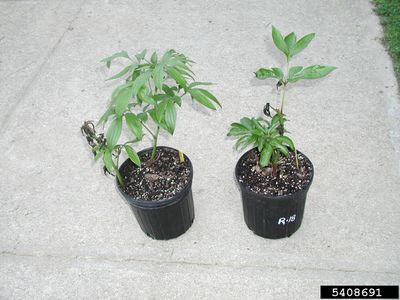Peony botrytis blight is especially frustrating, as it can lead to the loss of flower blooms.
What is Botrytis Blight on Peony?
Also known as gray mold, botrytis blight is caused by a fungus which, while unsightly and concerning, is not deadly. In peony plants, either Botrytis cinerea or Botrytis paeoniae fungus is the culprit. Peony botrytis blight is most common when the spring weather is especially cool and rainy. These conditions make it ideal for dormant soil fungus to develop. Botrytis on peony plants can impact the stems, leaves, and flower buds. Among the first signs and symptoms found is the presence of gray mold (hence its common name). Peony botrytis blight is commonly responsible for the loss of flower blooms. When infected, peony buds will form but turn brown and die before they are able to open. It is for this reason that botrytis on peony plants can be especially disappointing for cut-flower gardeners.
Peony Botrytis Control
When it comes to peony botrytis treatment, routine observation will be key. It will be imperative that parts of plants which demonstrate symptoms of blight are removed and destroyed. Maintaining best irrigation practices will also help in peony botrytis control. Peony plants should never be watered from above, as this can cause fungal spores to splash onto the plants and spread. Each growing season peony plants should be properly cut back. After doing so, all debris should be removed from the garden. This will help diminish the overwintering potential of the fungus. Though it is uncommon for plants to become infected with blight every season, the fungus can build up in the soil. If recurring instances of this disease are an issue, growers may need to apply a plant fungicide. This is usually done several times throughout the spring as the plants grow. Gardeners who choose to implement this method should always follow manufacturer’s labels carefully for safe application.
